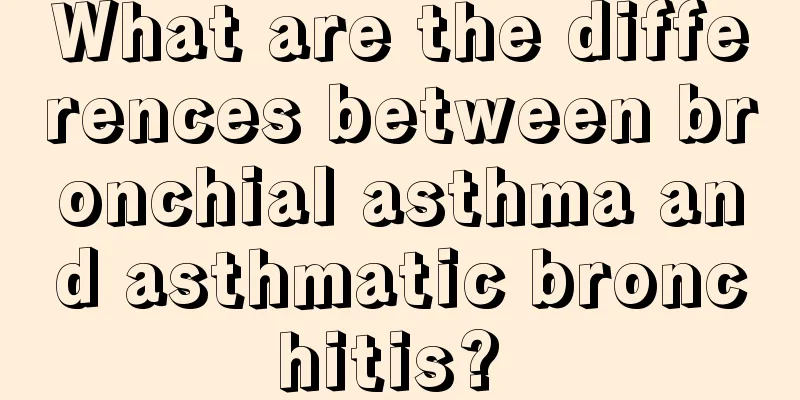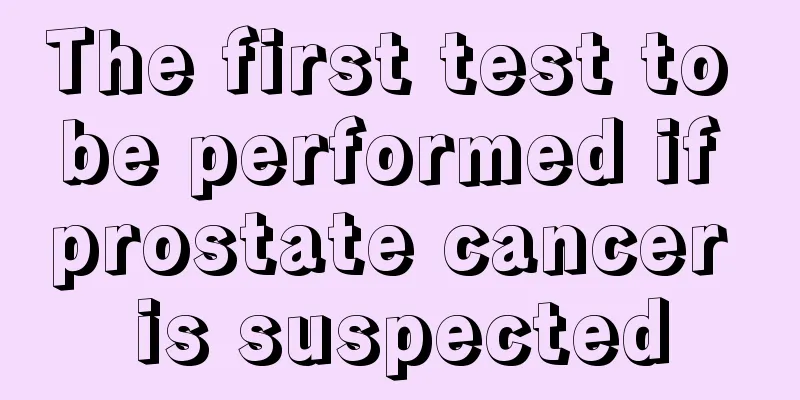What are the differences between bronchial asthma and asthmatic bronchitis?

|
Many patients often confuse bronchial asthma and wheezing asthma. The main reason is that they have many similarities. For example, both diseases will cause symptoms such as wheezing and coughing up phlegm when they occur. However, the difference between the two diseases is also very large. If you cannot distinguish between the two diseases, you cannot treat them correctly. Let's take a look at the differences between bronchial asthma and wheezing bronchitis. (1) In terms of the age of onset, most patients with bronchial asthma develop the disease in childhood or youth, and about 1/5 of the patients have a family history of the disease. Patients with asthmatic bronchitis are mostly middle-aged or elderly people with no family history. (2) From the perspective of the season of onset and the characteristics of the attacks, bronchial asthma has a higher incidence in spring and autumn and is characterized by paroxysmal attacks. After the triggering factors are eliminated and the attacks stop, the patient can return to normal without any adverse symptoms, just like a normal person. Asthmatic bronchitis often occurs in cold seasons, with repeated acute attacks as the main manifestation. After the attack is relieved, there is still a long-term chronic cough, wheezing, and sputum. (3) From the perspective of clinical symptoms, bronchial asthma generally does not have a history of chronic cough or sputum production, but is characterized by wheezing. The associated expectoration is mild. Asthmatic bronchitis is often accompanied by wheezing after several years of coughing and expectoration, and the expectoration is more severe. Most cases are aggravated by upper respiratory tract infection. (4) In terms of physical signs, bronchial asthma is mainly characterized by wheezing in both lungs; while in wheezing bronchitis, in addition to wheezing, the lungs often have moist crackles. (5) From the perspective of drug treatment, traditional Western medicine uses bronchial spasmolytic drugs such as aerosol inhalation to treat acute attacks of bronchial asthma, which is very effective at the time and can temporarily relieve symptoms. Traditional Chinese medicine is increasingly recognized by patients for treating chronic diseases such as bronchial asthma, and antibiotics are the main means of controlling infection in acute attacks of asthmatic bronchitis. The above is some introduction to the differences between bronchial asthma and asthmatic bronchitis. Patients must understand the differences between these two types of diseases so that they can receive correct treatment and not delay their own condition. This is very important. Patients should also pay more attention to their diet and avoid eating spicy and greasy foods. |
<<: Is facial paralysis contagious?
>>: What are the sequelae of herpes zoster?
Recommend
Cervical cancer screening methods
The patient lies flat on the examination table, a...
Is acupuncture useful for dizziness?
Dizziness is a common condition in people's d...
What causes chest tightness and rapid heartbeat?
For friends who experience chest tightness and ac...
Experts introduce mid-term treatment methods for liver cancer
Many patients with liver cancer are already in th...
How to remove the hot pot smell from hair without washing it
Have you ever gone to a hot pot restaurant and ca...
Is small cell lung cancer contagious? Clinically confirmed that small cell lung cancer is not contagious
Small cell lung cancer is a common malignant tumo...
Wumei picked off the scab on the fifth day
Eyebrows play a vital role in a person's appe...
Twelve ways to help you live to the limit of your lifespan
1. Let your brain run at high speed can increase ...
Is a pulse of 74 normal?
Pulse mainly refers to the number of times a pers...
What to do if acne marks turn into moles
In life, many people are glad that the acne on th...
What harm does mercury do to the body?
As we all know, mercury is a heavy metal element ...
Why is my arm numb? Causes of arm numbness
If you often experience numbness in your arms, yo...
What are the health guidelines for heart failure
Heart failure is a syndrome of heart dysfunction ...
Steps to make jelly with potato starch
Potato flour jelly is made from potato starch. Th...
What to do if you have a big neck? How to treat a big neck
Big neck is the common name for an enlarged thyro...









